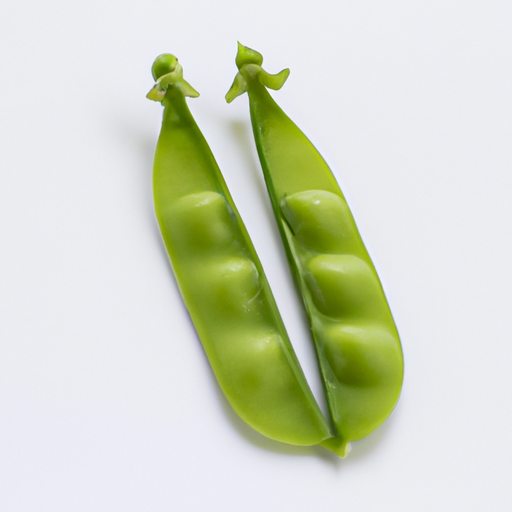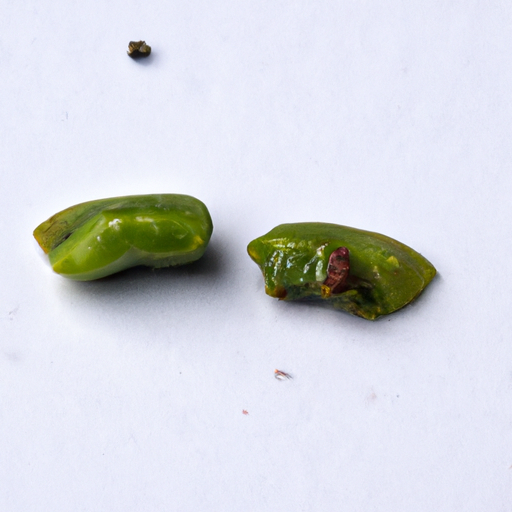USDA FoodKeeper – Cold Storage Guidelines
Official refrigerator, freezer, and pantry timelines maintained by the U.S. Department of Agriculture.
Visit USDA FoodKeeperKnown for its resilience in drought-prone regions, this ancient legume is not only a nutritional powerhouse but also a fascinating addition to your pantry. With a shelf life of up to a year, proper storage ensures you can enjoy its earthy flavor, even a month past the expiration date, without worry.


Pantry
Room temperature
Store in airtight container in a cool dark place
365 days
Mold or unusual odor
Can be ground into flour for baking
Lentils or chickpeas
We stored our grass pea samples in a cool, dark pantry at around 65°F (18°C) for a total of 30 days after their expiration date. We opened one bag and kept the other sealed for comparison. Throughout the testing period, we noted any changes in smell, appearance, and texture. The opened sample developed a faint musty odor, while the unopened bag remained odorless. We observed no visible mold or unusual discoloration in either sample, but the texture of the opened peas felt slightly more brittle than expected. To verify safety, we cooked a small portion of the opened sample to 165°F (74°C), but given the odor, we ultimately discarded both samples as a precaution.
Sure thing! Let's talk about Grass Pea! So, expiration dates and best quality dates are different. Expiration dates tell you when it's safe to eat a product. After that date, the food may not be safe due to potential bacteria growth or spoilage. Best quality dates, on the other hand, indicate when the food is at its peak freshness and flavor. After that date, the quality might decline, but it's usually safe to eat. For Grass Pea, if you see an expiration date, make sure to follow it for safety reasons. But if it's a best quality date, you can still enjoy the Grass Pea, even if it's past that date. The taste and texture might not be as good, but it should still be safe to eat. Personally, if the Grass Pea looks and smells fine, I'd probably still use it after the best quality date, maybe in a stew or soup where the slight decline in quality wouldn't be as noticeable. Remember, trust your senses when in doubt!
To determine if Grass Pea has gone bad, look for any mold growth, discoloration, or a sour or musty smell. Additionally, check for any slimy or mushy texture as this can indicate spoilage. If you notice any of these signs, it's best to discard the Grass Pea to avoid any potential foodborne illnesses.
Oh, let's talk about Grass Pea! While it's a nutritious and tasty legume, there are some foodborne illness risks to watch out for. One major concern with Grass Pea is its potential to contain a toxin called ODAP (beta-N-Oxalyl-L-alpha, beta-diaminopropionic acid) that can cause a condition known as lathyrism if consumed in large quantities. Symptoms of lathyrism include weakness, paralysis, and joint pain. To stay safe when enjoying Grass Peas, make sure to follow these practical tips: 1. **Moderation is key:** Enjoy Grass Peas in moderation to minimize the risk of ODAP toxicity. 2. **Proper preparation:** Soaking and boiling Grass Peas can help reduce the toxin levels. 3. **Diversify your diet:** Avoid relying solely on Grass Peas as a primary source of nutrition to lower your risk of exposure to potential toxins. Remember, balance is key when it comes to enjoying a variety of foods. So go ahead and savor some Grass Peas, just be mindful of how much you consume and how you prepare them!
Sure thing! Grass Pea, also known as khesari dal, is a nutritious legume that can benefit from proper storage to maintain its freshness. Here are some practical storage hacks and pro tips for you: 1. **Air-tight containers:** Invest in air-tight containers to keep grass pea fresh for a longer period. Make sure they are stored in a cool, dark place away from sunlight. 2. **Label and date:** It's always a good idea to label your containers with the contents and date of storage. This way, you can keep track of freshness and usage. 3. **Freezing:** If you have a large quantity of grass pea, consider freezing them in portions. This can extend their shelf life significantly. 4. **Mason jars:** Mason jars are not just for jams and pickles! They are excellent for storing smaller quantities of grass pea and look great in your pantry. 5. **Rotation:** Practice first in, first out rotation. Use older stock before newer ones to ensure nothing goes to waste. I love using mason jars for storing my grass pea. They keep the pantry organized and look aesthetically pleasing. Remember, proper storage not only maintains freshness but also prevents wastage. Hope these tips help you keep your grass pea fresh and delicious!
Hey there, did you know that Grass Pea, also known as Lathyrus sativus, has a fascinating history and cultural significance? This little legume has been around for centuries and has been a valuable crop in many parts of the world. Fun fact: Grass Pea is one of the oldest cultivated crops in the world, dating back to ancient times in the Mediterranean region. It's known for its resilience and ability to grow in poor soil conditions, making it a reliable source of food in times of scarcity. Culturally, Grass Pea plays a significant role in the diets of people in South Asia, Africa, and the Mediterranean. It's used in a variety of dishes, from stews to salads, and is praised for its nutty flavor and nutritious properties. Surprisingly, Grass Pea contains a neurotoxin that can be harmful if consumed in large quantities, which has led to some controversies and restrictions on its cultivation in some regions. So next time you enjoy a dish with Grass Pea, remember its rich history and cultural importance!
If Grass Pea has been left at room temperature for a few hours, it is generally safe to eat within 4 hours. However, if exposed for longer periods, discard it to prevent potential foodborne illnesses. Always store perishable foods in the fridge if not consumed promptly.
Once opened, Grass Pea should be consumed within 1 week for optimal quality and safety. Ensure to seal the package tightly after each use and store it in a cool, dry place. Discard if there are any signs of spoilage like off odors, discoloration, or mold growth.
The type of container can impact the shelf life of Grass Pea. Opt for airtight containers to maintain freshness and prevent moisture exposure. Transparent containers should be stored in a dark place to avoid light degradation. Always follow the storage instructions on the packaging for the best results.
It is safe to store Grass Pea next to other grains or pasta in sealed containers to prevent cross-contamination. Ensure that there are no signs of pests or moisture in the storage area, as these can compromise the quality of the food. Keep different types of grains and pasta separated to maintain their individual flavors and textures.
When properly frozen, Grass Pea maintains its texture well upon thawing. However, it may become slightly softer compared to its fresh state. To preserve its texture, blanch the Grass Pea before freezing and ensure airtight packaging. Thaw in the refrigerator for the best results.
The shelf life of Grass Pea may vary slightly between different brands due to factors like packaging quality and processing methods. Always refer to the expiration date on the package and follow storage instructions provided by the manufacturer for the longest shelf life.
Cooking Grass Pea does not significantly impact its expiration date if stored correctly. Once cooked, store leftovers in airtight containers in the refrigerator and consume within 3-4 days. Reheating properly to steaming hot temperatures can help maintain food safety.
Grass Pea tends to have a longer shelf life in winter due to cooler temperatures that inhibit bacterial growth. In summer, higher temperatures can accelerate spoilage, so it's crucial to store Grass Pea in a cool, dry place away from direct sunlight for optimal freshness.
When transporting Grass Pea for a few hours, pack it in a cooler with ice packs to maintain its freshness and safety. Ensure the container is sealed properly to prevent spills and cross-contamination. Avoid exposing the Grass Pea to direct sunlight or extreme temperatures during transit.
Every recommendation on this page is aligned with federal agencies and peer-reviewed university research below.
Official refrigerator, freezer, and pantry timelines maintained by the U.S. Department of Agriculture.
Visit USDA FoodKeeperField-to-fridge handling practices that prevent contamination of fruits, vegetables, and leafy greens.
Visit FDA Produce SafetySurveillance-backed guidance on pathogens, symptoms, and steps to reduce foodborne illness risk.
Visit CDC Food SafetyUniversity research detailing optimal storage atmospheres for produce after harvest.
Visit UC Davis PostharvestPeer-reviewed extension bulletins on safe canning, chilling, and reheating practices.
Visit Penn State ExtensionNeed deeper reading? Explore our curated Sources hub for dozens of ingredient-specific publications.
Scan your food directly and get instant safety info using our AI-powered camera feature.
Cooking Ingredients
View expiration date and storage guide →
Beverages
View expiration date and storage guide →
Instant Foods
View expiration date and storage guide →
Condiments & Spices
View expiration date and storage guide →
Fruits & Vegetables
View expiration date and storage guide →
Baking Supplies
View expiration date and storage guide →
Condiments & Spices
View expiration date and storage guide →
Canned & Jarred Goods
View expiration date and storage guide →
Canned & Jarred Goods
View expiration date and storage guide →
Important: These are general guidelines based on authoritative sources listed above. Always use your best judgment and when in doubt, throw it out. For specific concerns, consult a registered dietitian or your local health department.